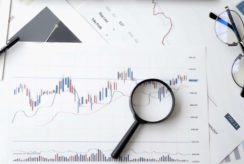We are several months into the COVID-19 crisis and priorities within the procurement industry have realigned. The pandemic has highlighted the necessity to adjust and prepare for the abnormal tomorrow, oversee procurement risks and costs and alleviate the complexity of supply chains. This article outlines our key observations of the IT sourcing advisory market as the crisis has ensued and the lessons we can take on for the future.
Immediate response
The initial phase of dealing with COVID-19 focused on the many immediate challenges, such as the availability of critical products and services, an immediate change in working practices, and coordination with external parties including customers, suppliers, regulators and other governmental organisations. Procurement functions, whilst continuing to manage day-to-day activities and ongoing projects, had to address specific challenges posed by the pandemic – such as broken supply-chains, workers not being able to report to work, and restrictions and delays that affected suppliers’ ability to implement services.
This phase solely covered the here-and-now as businesses strived to deal with the situation and manage continuity, asking themselves the following key questions:
Is my supply base robust? How do I guarantee supply? Are my current Suppliers reliable? Who are the alternatives?
Procurement teams needed to play a crucial role in shoring up and strengthening their organisations’ supplier base. In this instance, the key was to gain visibility of any supply risks and shortages, work together to remediate pitfalls all whilst assessing substitute suppliers and materials and considering shifts to local suppliers where feasible. Additionally, firms were forced to adjust to the new commercial realities by re-examining stock levels, reconstructing financial baselines, adjusting their fixed costs and providing financial safety nets for struggling partners.
Where are we now?
We are now coming to the end of the second phase of the response, where focus shifted to the mid-term uncertainty and long-term economic and social implications of COVID-19. The response to this uncertainty is about exploring immediate tactical improvements to procurement processes, systems, supply chains and tools that ensured the continuity of processes and activities, whilst enabling much quicker decision making and agility.
The questions have been consistent throughout and centre around supply and demand:
Have we seen a change in demand? Which direction is our business heading? Can my supply base recover?
Most firms today are concentrating on the medium-term outlook; focussing on learning from the circumstances and emerging stronger than before by engaging in four simple steps for recovery:
- Enhancing visibility of the supply network to recognise risks and any potential capacity constraints.
- Increasing diversity by seeking additional sources of supply in order to spread supplier risk whilst simultaneously considering every available cost reduction lever across the Supplier base.
- Taking stock and rebalancing the product and contract library. The previous two steps concentrate on supplier risk management whereas this third step brings category strategy management to the forefront as organisations revaluate their category strategy parallel to supply chain planning.
- Reassessing customer demand and uncovering how customers’ needs have altered at the same time as developing new solutions to meet these changing demands.
Lastly, it has become increasingly clear that shifting focus towards the medium-term has led businesses to rethink their target operating model; should it be reconfigured to encompass various unknowns or continue as-is?
Where are we heading?
The pandemic caught many companies by surprise, exposing shortcomings in their mechanisms to prepare for and alleviate unexpected disruptions to supply whilst exposing a lack of centralised and coordinated visibility in risk monitoring. Thus, the final phase within a procurement functions’ framework response to the crisis revolves around resilience:
How can I prepare for the abnormal tomorrow? How can I account for risks from future interruptions? How can I construct a supply base that is robust?
Firms are adopting long-term strategies and are looking to enhance their capabilities. One continual theme across the future of procurement is data. It goes without saying that data driven procurement is the key to building a robust long-standing IT sourcing strategy. Advanced analytics, such as AI, and consistent monitoring of spend will help to cast a spotlight on the overall supplier environment, recognise dependencies and discover bottlenecks.
Once the overall value chain is uncovered through a data-led approach, making way for increased supplier lifecycle visibility and centralisation, organisations can re-adjust their efforts towards their End-To-End sourcing strategy and operating model design through the following actions:
- Building in resilience to their sourcing supply network
- Redefining the Procurement operating model
- Constructing business continuity plans
- Outlining the future-oriented technology roadmap
Underpinning each phase and at the core of every procurement decision is the customer. The third phase of an organisation’s response to COVID-19 will leverage technology to launch permanent communication channels with customers and use this information to drive sourcing decisions.
What's next: how do I ensure my procurement function is robust?
As your company recovers from COVID-19 and works towards leveraging learnings from the crisis to strengthen your supply function, Wavestone recommends that focus shifts towards the reconfiguration of your sourcing strategies to ensure that they are robust and future-proof. Key focus should be on establishing a path to improving IT procurement services which aligns not only to meeting your business objectives, but also considers risks from any future disruptions and allows for a resilient supply base.
Companies should work to redefine and execute their sourcing strategy effectively whilst tackling imperative issues in the current market (future proofing for the abnormal tomorrow). For example, we recommend that firms consider establishing long-term strategic partnerships, linking strategies across functions and streamlining supplier lifecycle management.
If companies can recalibrate their sourcing strategies whilst undergoing an organisational adjustment to create a centralised 360 view of products, suppliers and services, they will be able to make more informed decisions, align tasks and pinpoint new ways to reduce cost.
At Wavestone, through a consultative process, we can leverage our expertise and proven Sourcing & Benchmarking Methodology, ensuring it is tailored to your specific requirements, to transform the way your organisations’ procurement function operates, create greater visibility across your procurement landscape and help strengthen supplier relationships.


